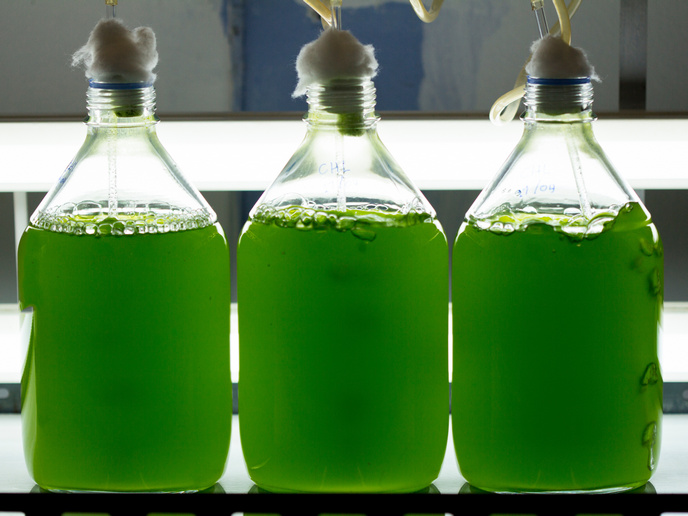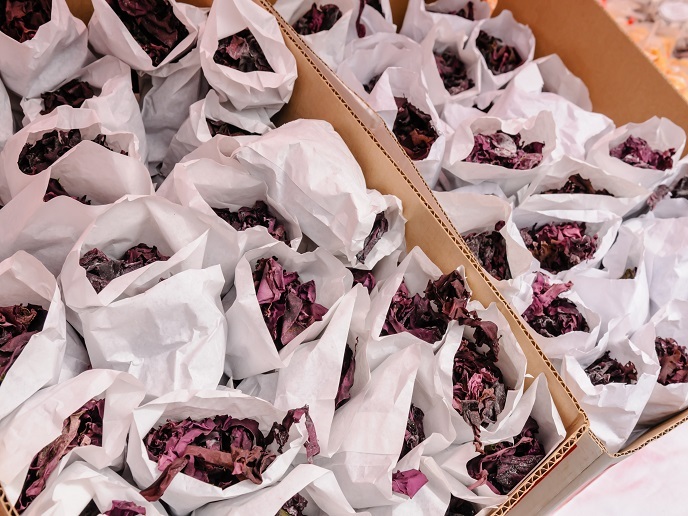Novel proteins could meet our food security needs
New sources of proteins are key to dealing with the environmental challenge of feeding a growing population. To meet the increasing demand, current protein production will have to double by 2050(opens in new window), so it’s vital to find sustainable, alternative protein sources that can be economically produced in quantities that meet the growing needs of the food and feed industry. Single-cell protein, such as yeast cells, along with microalgae and insects, are all interesting prospects. One EU-supported project has been looking into how foods, and feeds, derived from these sources can be introduced to the market, at scale. “In the project we found that the NextGen proteins show lower carbon, water and land footprints than conventional protein production. The processes are efficient, and align with waste reduction, recycling and reuse principles,” explains Birgir Örn Smárason, the coordinator of the NextGenProteins(opens in new window) project.
Helping novel protein producers fine-tune their processes
NextGenProteins helped several small companies that are trying to break into the food or feed market with a range of expert advisors including research and development consultants. The processes behind the production of usable proteins from micro algae, single-cell sources, such as yeast, and insects were considered and perfected. “There was a lot of work done regarding optimisation of processes,” says Smárason, who leads the Sustainability and Aquaculture research group at Matís(opens in new window), a research and development organisation focusing on food and biotech, in Iceland. He sets out how the project helped a small company called VAXA Technologies(opens in new window). “VAXA has the great idea of using CO2 emissions, and excess hot and cold water from a geothermal power plant for high-tech phototropic cultivation of microalgae. “Focused on using spirulina as a source of protein for food, feed and a wide range of supplements, they hit a real snag. The strong colour and taste of dried spirulina put off even the animals involved in the trials. But with the help of the NextGenProteins project, the company gained the know-how to produce microalgae that was less intense in colour and taste. Now Blue UltraSpirulina and Green UltraSpirulina are ready for the market,” Smárason explains. Another company that benefited from coming under the project’s umbrella was MUTATEC(opens in new window). Based in France, MUTATEC focused on insects as a source of protein, farming them on pre-consumer or agri-food waste. Smárason sets out how the project helped the company: “In NextGenProteins, MUTATEC addressed the challenges they were facing in developing novel, sustainable and cost-efficient value chains for black soldier flies. The project supported the company as it scaled up the industrialisation of black soldier fly farming, and commercialisation of protein products for animal feed. They now have the capacity to produce 30 000 tonnes a year.”
Making new forms of proteins more widely available
NextGenProteins gave protein producers the opportunity to study, optimise and upscale their production lines both upstream and downstream. The continuous feedback between R&D and industry partners helped ensure a targeted development process, which will enable the commercial-scale implementation of these technologies in the future. “The properties of the different raw materials were established, and the functional, bioactive and sensorial properties of the products improved. All of which helped our partners to optimise their processes,” notes Smárason. The project’s partners focus on using renewable energy for their operations and industrial waste streams for their production, such as: forestry offcuts; CO2 emissions from geothermal power plants; and pre-consumer or agri-food waste. The processes use less water and land compared to conventional protein production.
All the positives – but what about market uptake?
The team found that focusing on price competitiveness, promoting the sustainability credentials, good product development and marketing are all key to gaining traction. But environmental sustainability is not enough. The project’s analysis found many stakeholders were concerned about the prices of the alternative protein ingredients. So economic sustainability is also key. “There were many stakeholders with positive expectations, but also lots who were concerned about the potential risks related to the production and use of the proteins. A major concern, shared by several stakeholders, was the risk of consumers not accepting the new protein ingredients,” Smárason remarks. “We have gained a lot of technical know-how that can help scale up production and develop products, now we need to increase investment and take the consumers with us!”







